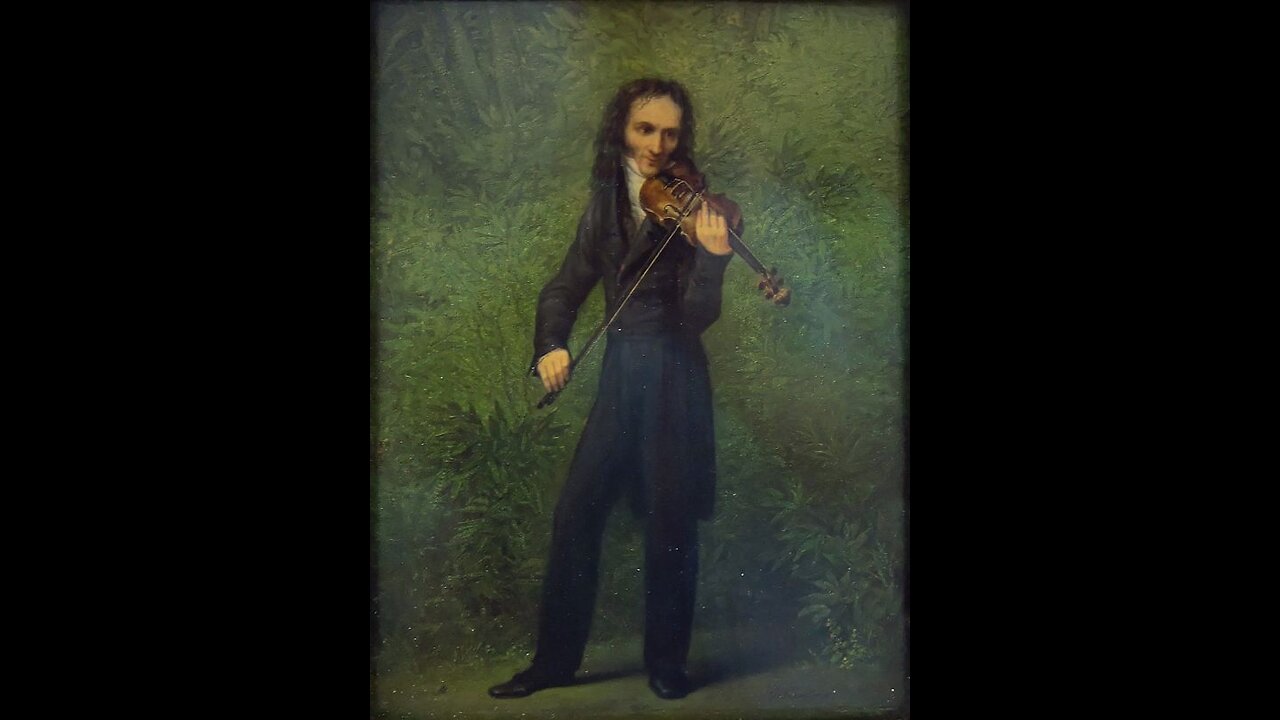Premium Only Content

"Zanoni", Book 1, by Edward Bulwer-Lytton
Book 1: The Musician
Due Fontane
Chi di diverso effeto hanno liquore!
"Ariosto, Orland. Fur." Canto 1.7.
----
0:00:00 Chapter I
0:23:17 Chapter II
0:34:52 Chapter III
0:47:05 Chapter IV
1:01:22 Chapter V
1:09:44 Chapter VI
1:21:13 Chapter VII
1:32:20 Chapter VIII
1:41:12 Chapter IX
1:55:30 Chapter X
----
The pictures used are:
Chapter 1: a paining of The violinist Niccolò Paganini by Georg Friedrich Kersting. Gaetano Pisani is a fictional character, but Niccolò Paganini seems to have about the right look to serve as a stand-in. Paganini is early 19th century instead of late, but close enough.
Chapter 2: Teatro San Carlo - View of stage from Royal Box by Viva-Verdi, used here under the Creative Commons Attribution-ShareAlike 3.0 Unported license (https://creativecommons.org/licenses/by-sa/3.0/deed.en).
Chapter 3: Napoli, the Piazza Vittoria e Riviera di Chiaia
Chapter 4: "The Poet" by Giuseppe Bonito. It was painted in 1742, so a few decades too early for our purposes, but it was irritatingly difficult to find a picture for this chapter at all. Meant to represent Count Cetoxa and his associates.
Chapter 5: "Two old men disputing" by Rembrandt (1628). In this case, Zanoni and his associate.
Chapter 6: "Un petit souper, a la Parisienne; - or - a family of sans-culotts refreshing, after the fatigues of the day" by James Gillray, published by Hannah Humphrey, hand-coloured etching, published 20 September 1792
Chapter 7: Théodore Géricault on His Deathbed (1824) by Charles Emile Callande de Champmartin. Sure, the old man in this chapter didn't actually die, but he almost did, and his would-be assassin mistook him for dead, so...
Chapter 8: "Conversation Piece: Three Men in Eighteenth-Century Costume" (1890) by Carl Wilhelm Anton Seiler, at the Victoria and Albert Museum in London.
Chapter 9: "Death of a musician" (1859) by Octave Tassaert
Chapter 10: the Angel of Grief by William Wetmore Story, which is actually from a cemetary in Rome for Protestants, so not the best fit for a Neapolitan Roman Catholic, but I still feel like it is a fitting image to capture the mood of this chapter.
To follow along: https://www.gutenberg.org/files/2664/2664-h/2664-h.htm#link2HCH0001
-
 LIVE
LIVE
SpartakusLIVE
21 minutes agoVerdansk Duos w/ Nicky || Saturday Spartoons - Variety Later?!
111 watching -
 1:32:54
1:32:54
Jeff Ahern
2 hours ago $21.89 earnedThe Saturday Show with Jeff Ahern
61.6K8 -
 LIVE
LIVE
TheManaLord Plays
4 hours agoMANA SUMMIT - DAY 1 ($10,200+) | BANNED PLAYER SMASH MELEE INVITATIONAL
311 watching -
 LIVE
LIVE
Major League Fishing
2 days agoLIVE Tackle Warehouse Invitationals Championship, Day 2
174 watching -
 LIVE
LIVE
GamerGril
1 hour agoScream Queens 💕 Goth & Gore 💕 Unpossess
104 watching -
 LIVE
LIVE
CassaiyanGaming
4 hours agoMYSTIVITHON - 12 HOUR CHARITY STREAM 🌊
51 watching -
 2:14:16
2:14:16
Lara Logan
17 hours agoSTANDING AGAINST THE GLOBAL ELITE with Trump Ally President Milorad Dodik of Republika Srpska | Ep34
19K10 -
 LIVE
LIVE
FoeDubb
3 hours ago🏰KINGDOM MENU: 👑CHILL CONVO 🏈RANK FOOSBALL 🎮DELTA FORCE PEW PEWS DILLY DILLY!!!
46 watching -

PixiEars_
1 hour agoBDAY STREAM
1042 -
 LIVE
LIVE
Total Horse Channel
19 hours ago2025 Reno Snaffle Bit Futurity | Saturday
2,039 watching